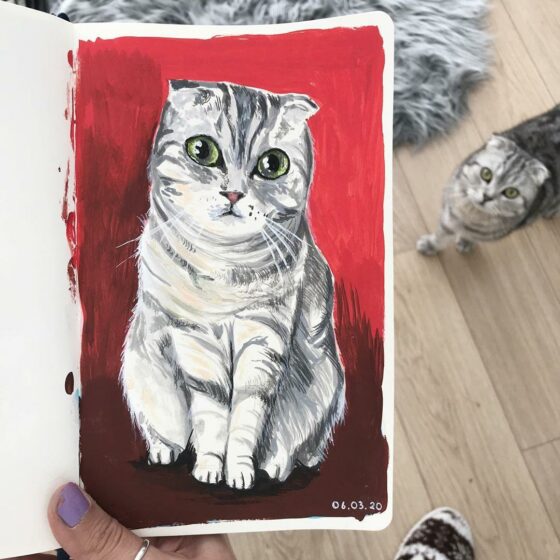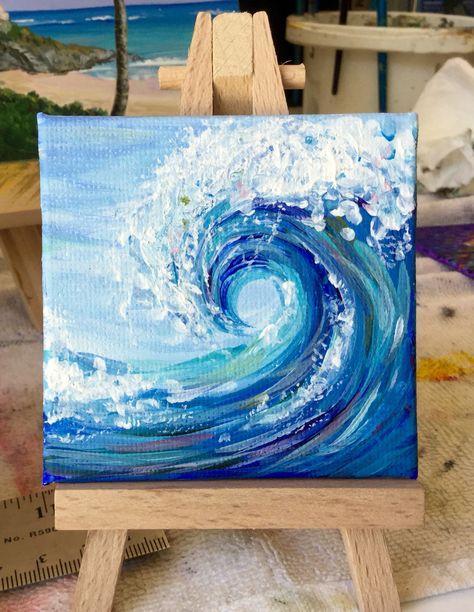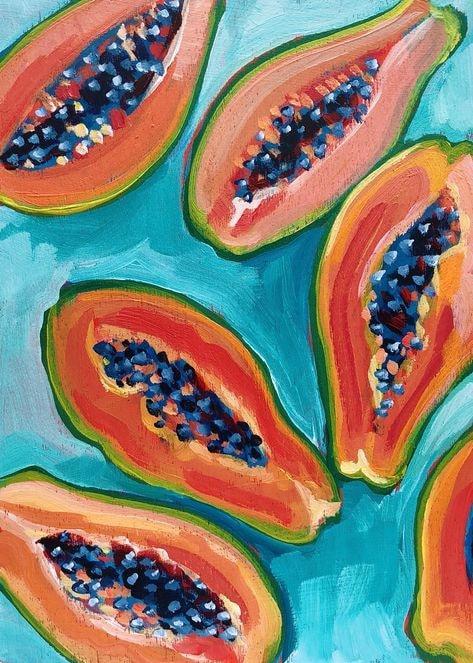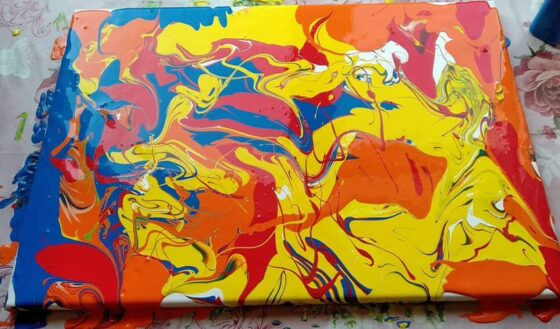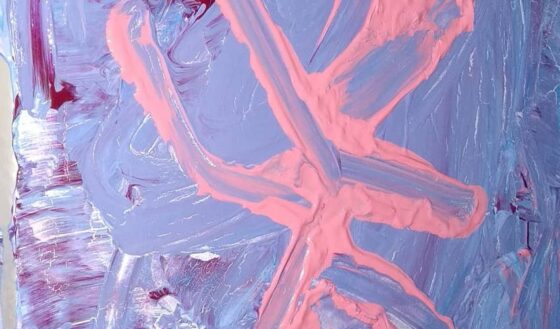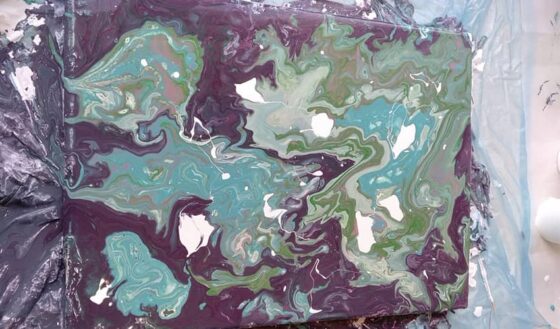Acrylic paint is really versatile, and it allows painters to get creative in their art process. And if you are into using acrylic paint, have you ever wondered how they made that color in a bright picture?
Making your own acrylic paint is really fun, and it is so easy to DIY them that you will stop buying paints from the store. So, get ready to unleash your inner mad scientist because today, we’ll be learning how to make your own acrylic paint at home. Trust us! It will be a super interesting and enjoyable activity.
Oh, and did we forget to say that it’s a total steal? So, be ready to greet a budget-friendly alternative that unleashes your creativity.
How to Get Started: Materials You Need
Let’s check your supplies before preparing the paint. Get together your color powders, binding agents, water, containers, and any extras you want to use.
Getting to Know Pigments: Colors and Types
Pigments are what make your acrylic paint what it is. They come in many different shades and textures. Choose colors that say they can be used with acrylics to make sure they stay stable and last as long as possible. Try out different colors to find out what they bring to your palette that others don’t.
Binders and Mediums: Picking the Right Base
Binders give the paint its ability to stick to things. People often use PVA glue as a binder. Choose a glue that works well with acrylic paint to get the consistency and drying time you want. Consider trying out different binders to see what they do to your paint.
Mixing Colors: Making Your Own
Now comes the fun part: mixing your paints and fillers to make your own colors. The next step is to carefully mix some colorant with your adhesive. Repeat as necessary to get the desired shade and consistency. If you’re just starting, check out this color mixing guide.
A word of advice: when adding color, it’s better to apply a tiny amount at first and then more if you think it needs it. You’ll probably amaze yourself with only a little amount!
Texture and Balance: Getting the Quality of Paint You Want
How smooth and thick your acrylic paint is depends a lot on how much color and glue you use. Try out different proportions to get the thickness or thinness you want. Change the amount of color or glue to get the right paint quality for your style of art.
Improving Your Homemade Acrylics: Additives You Can Choose to Use
Additives are a great way to take your homemade paints to the next level. Extenders can make it take longer for the paint to dry, and drying retarders can stop paint from drying too quickly. However, adding too many chemicals might damage your paint.
Mixing and Blending: Making Colors and Effects That Are Unique
Mix and blend your homemade acrylic paints to see what you can come up with. Mix colors together to make new shades, and try out different ways to get different results.
Problem-solving: Common Problems and How to Fix Them
Problems with paint separating or not being the right color can happen, but they can be fixed. If your paint starts to split, just mix it up well. Change the amount of color to glue to fix problems with uniformity.
Safety First: Precautions and Doing the Right Thing
Always put your safety first and take the right measures. Wear gloves to protect your hands, and perform your job somewhere well-ventilated to avoid inhaling any vapors. Read and follow the safety guidelines mentioned in the product packages. Throw away trash the right way, and be careful with the colors and additives.
How to Make Your Own Acrylic Paint at Home: Step-by-step
Gather the best acrylic painting supplies you need to complete the process.
Crush the Dry Color
You can put pressure on it with the flat side of a paintbrush until you don’t feel any “grittiness.” Most paint colors sold in art shops come in the form of powder. Many artists also choose to use crushed dried plants or other things to make their own colors.
Measure How Much Colors and Acrylic Base You Need
Before you start putting the parts together, you should measure the amount of color and base used and write it down. Before you finish a drawing or touch it up, you may need to make more of a certain color. You can only do this consistently if you know how much acrylic base and color you used.
Put Color in a Plastic Jar with Acrylic Base
Mix them well with the wooden chopstick until the color is evenly distributed. Mix the solution and the colored base together well. Read the instructions that came with your plastic binder because each brand has a different amount of base for a solution that works best.
Add Acrylic Retarder to the Mix
Acrylic retarder helps acrylic paint dry more slowly. It’s important to do what the directions for your retarder say.
Things to be Careful About
Simple precautions for creating acrylic paints are provided below:
- To avoid fading over time, be aware of the lightfastness ratings of your premixed pigments.
- To prevent very light or dark colors, know how much pigment to apply to each color.
- To improve durability and prevent peeling or cracking, use acrylic media like pastes or gels rather than water.
- The pigment-to-binder ratio depends on the finish you want, but it should be 20% pigment and 80% binder.
- To avoid clumping and guarantee uniform color dispersion, sift earth pigments through cheesecloth if they are in fine powder form.
- Be careful not to add too much water, which might thin the paint or cause uneven application, or too little water, which could cause uneven mixing or “mud.”
- After properly mixing the mixture to remove any lumps, let it rest for a while before adding more mediums.
- To minimize drying out and increase shelf life, think about storing tiny quantities of paint in plastic containers with lids or ice cube trays.
- Keep a lot of acrylic paint on hand in your workshop since it is easy for them to run out.
How to Store Your Homemade Acrylic Paint
Acrylic paints have a long shelf life and don’t break easily. However, keeping your homemade acrylic paints in good shape and making them last longer is all about how you store them. Store them in small jars or tubes that won’t let air in. Labeling bottles with color and date makes them easy to locate. Keep your paints somewhere cool, dry, and out of the sun.
Good and Bad Sides of Acrylic Paint
Both old-fashioned acrylic paint and newer acrylic paint have advantages and disadvantages when weighed alongside other color types.
Let us have a look at the pros first.
- It has many uses. You can apply paint to any surface that does not have oil or wax on it. This includes materials like cloth, paper, stone, rocks, transparent material, fabric, newspaper, metal, and rubber.
- It sets quickly. This lets you complete your job more quickly.
- It dissolves in water. You do not require paint thinner to get it away from your fingers and tools as long as they are still damp.
- It’s less dangerous and safer for kids and pets to be around.
- It can be changed. Acrylics can be mixed with different mediums to get different outcomes, make them stick better, or change how fast they dry.
- It’s strong. Acrylics are flexible, crack-resistant, and yellow-resistant.
- It’s colorful. You can check out these summer acrylic painting ideas—they’re the perfect way to bring your colorful ideas to life on paper.
- It doesn’t get wet while it’s dried.
Now, it’s time to watch out for the disadvantages.
- Its color gets deeper when it dries, so the color you start with may not be the color you eventually finish with.
- After drying, brushes, nails, and clothes are difficult to remove.
- You need to wear clothes that will keep you clean.
- It’s regarded as “less precious” by certain artists and consumers.
FAQ
Is it hard to make acrylic paint at home?
Absolutely not! Beginners can do it with a little help and some basic items. It’s fun and easy.
Are homemade acrylic paints as good as acrylic paints you buy in a store?
You can make good paints at home, especially if you use high-quality colors and fillers. Experimenting will help you find the balance and qualities you like best.
Final Thoughts
When you use high-quality materials, your handmade paints can compete with the best commercial brands. By learning about the magical process of making acrylic paint, you will learn more about color theory and get a better sense of texture and stability.
With coloring powders, fillers, and a little bit of wonder, you can make your own unique set of bright colors. Moreover, it’s fun and affordable!

